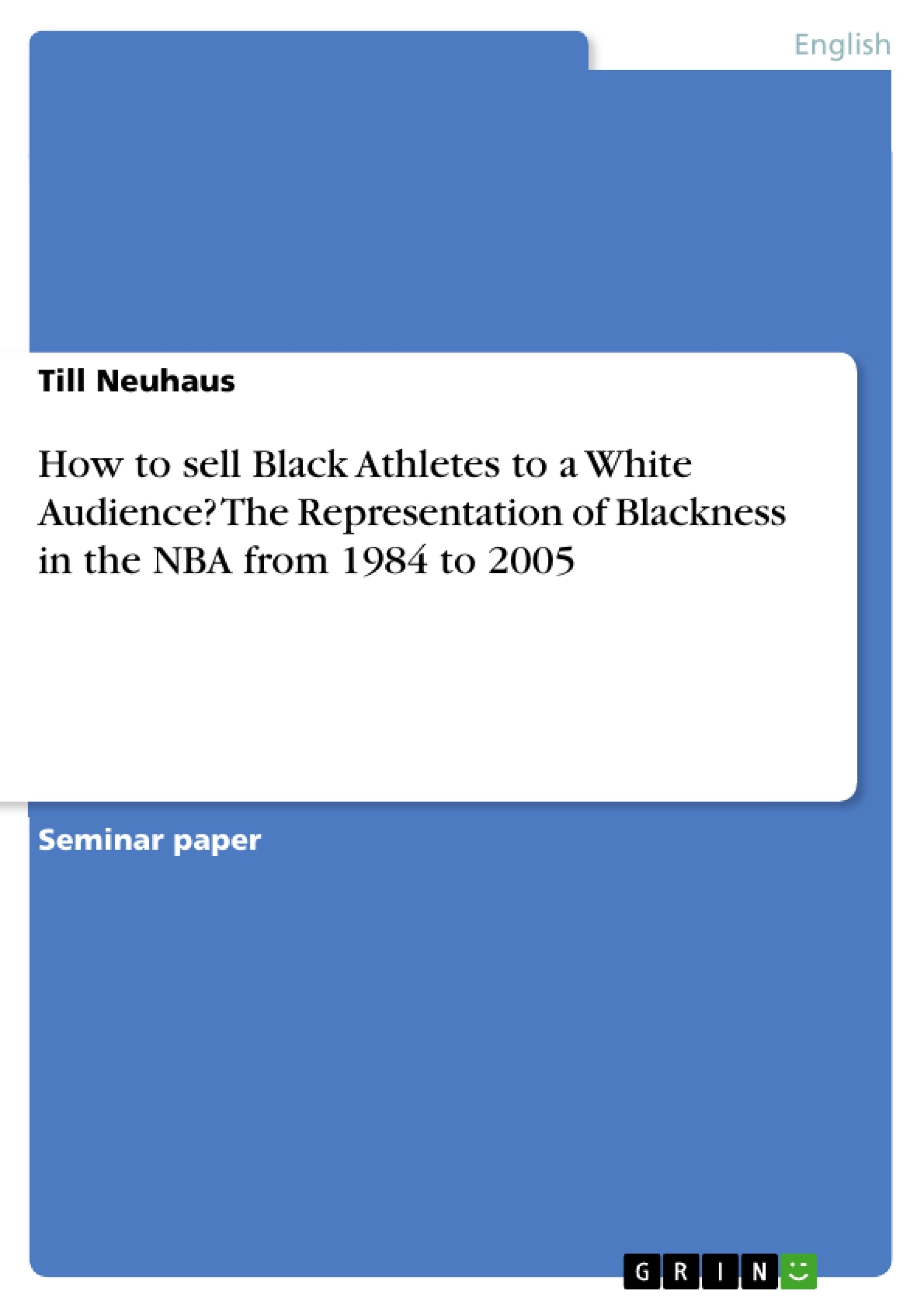David Stern turned the NBA into a billion dollar business. However, when Stern started his mission, the NBA had a serious image crisis: The league was perceived as drug-infested and too-black. Stern himself claimed that race, if everything else was handled correctly, would not be an issue in professional sports and basketball in particular. With regards to Stuart Hall, this paper will investigate what the dominant, or as Stern phrases it 'correct', way of handling race looks like and what kind of conclusions can be drawn on the basis of that approach. The main focus will be dedicated to the (by the NBA) created image of Blackness and how they try to portray and depict their players.
Inhaltsverzeichnis (Table of Contents)
- Introduction
- Basketball from 1891 to 1980
- The David Stern Era
- Bird, Magic, and Jordan
- Ghetto Aesthetics and the Malice in the Palace
- Summary
- Outlook and recent tendencies
Zielsetzung und Themenschwerpunkte (Objectives and Key Themes)
This paper aims to investigate the underlying ideologies in professional basketball and the representation of Black players, specifically focusing on the David Stern era as commissioner. It seeks to understand how the NBA, through its marketing strategies and media representation, has shaped the perception of Black athletes within the league.- The influence of media in shaping the representation of race in sports, particularly in the NBA.
- The interplay of power dynamics between White ownership and Black athletes, and how this influences the portrayal of Blackness.
- The evolution of the NBA's marketing strategies and their impact on the perception of Black athletes.
- The examination of key narratives surrounding Blackness in the NBA, such as the exotic Blackness of "Magic" Johnson, the "American value" representation of Michael Jordan, and the rise of "Ghetto Aesthetics."
- The ongoing debate surrounding the representation of Black urban experience and the "contested space" of basketball.
Zusammenfassung der Kapitel (Chapter Summaries)
- Introduction: This chapter introduces the central thesis of the paper, which explores the representation of Black athletes in the NBA, focusing on the era of David Stern's leadership. It highlights the importance of understanding the NBA as a business, and the significant role of media and marketing in shaping the league's image.
- Basketball from 1891 to 1980: This chapter provides a historical overview of basketball, tracing its development from its origins to the emergence of the NBA. It explores the early years of the league and the challenges it faced in establishing itself as a major professional sport.
- The David Stern Era: This chapter delves into the transformative leadership of David Stern, who took over the NBA in 1984. It examines the league's image crisis and how Stern's strategic marketing techniques contributed to its growth and financial success.
- Bird, Magic, and Jordan: This chapter analyzes the representation of Blackness in the NBA during the 1980s and 1990s, focusing on the contrasting images of Larry Bird and "Magic" Johnson, and the rise of Michael Jordan as a symbol of American values.
- Ghetto Aesthetics and the Malice in the Palace: This chapter explores the evolving representation of Blackness in the NBA during the late 1990s and early 2000s, examining the emergence of "Ghetto Aesthetics" and the controversial "Malice in the Palace" incident.
Schlüsselwörter (Keywords)
The central themes of this paper revolve around the representation of Black athletes in the NBA, power dynamics, media, marketing, ideologies, and the evolution of narratives surrounding Blackness. Key terms include: race, sports, professional basketball, NBA, David Stern, representation, marketing, media, ideology, Blackness, White dominance, power imbalance, ghetto aesthetics, and the Malice in the Palace.- Quote paper
- Till Neuhaus (Author), 2017, How to sell Black Athletes to a White Audience? The Representation of Blackness in the NBA from 1984 to 2005, Munich, GRIN Verlag, https://www.grin.com/document/366966



